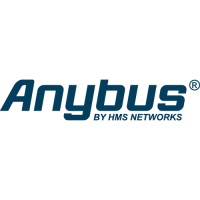Basic Operation 9 (258)
3 Basic Operation
3.1 General Information
3.1.1 Software Requirements
Generally, no additional network support code needs to be written to support the Anybus Com-
pactCom 40 PROFINET IRT, however due to the nature of the PROFINET networking system
certain things must be taken into account:
• Up to 32767 ADIs can be represented on PROFINET.
• ADI names, types and similar attributes cannot be accessed via PROFINET. They are how-
ever represented on the network through the built in web server.
• Up to 5 diagnostic instances can be created by the host application. An additional 6th in-
stance may be created in event of a major fault.
• For conformance reasons, the host application must implement support for network reset
types 00h (Power-on) and 02h (Power-on + Factory Default) in the Application Object
(FFh).
• PROFINET in itself does not impose any particular timing demands when it comes to acy-
clic requests (i.e. requests towards instances in the Application Data Object), however it is
generally recommended to process and respond to such requests within a reasonable time
period (exactly what this means in practice depends on the implementation and the actual
installation).
• The order in which ADIs are mapped to Process Data is significant and must be replicated
in the IO Controller when setting up the network communication (i.e. modules must be set
up in the same order, size and direction, as the mapped ADIs). In case of a configuration
mismatch, see Configuration Mismatch, p. 21 for more information.
See also ...
• Application Data Instances (ADIs), p. 13
• Diagnostic Object Anybus Module Objects, p. 89
• Anybus CompactCom 40 Software Design Guide, Application Data Object (FEh)
3.1.2 Electronic Data Sheet (GSD)
On PROFINET, the characteristics of a device is stored in an XML data file. This file, referred to
as the “GSD” file, is used by PROFINET engineering tools when setting up the network configu-
ration. HMS Industrial Networks AB provides an example GSD file, which must be adapted by
the user to suit the application.
Setting Identity and Function Information
The GSD file must be adapted to your implementation. First thing is the device identity.
In the GSD file there is a section called “DeviceIdentity”. It looks like this.
<DeviceIdentity VendorID="0x010C" DeviceID="0x0010">
<InfoText TextId="T_ID_DEV_DESCRIPTION"/>
<VendorName Value="HMS Industrial Networks"/>
</DeviceIdentity>
The identity in the example represents HMS values.
Anybus
®
CompactCom
™
40 PROFINET IRT Network Guide SCM-1202-023 EN 1.8

